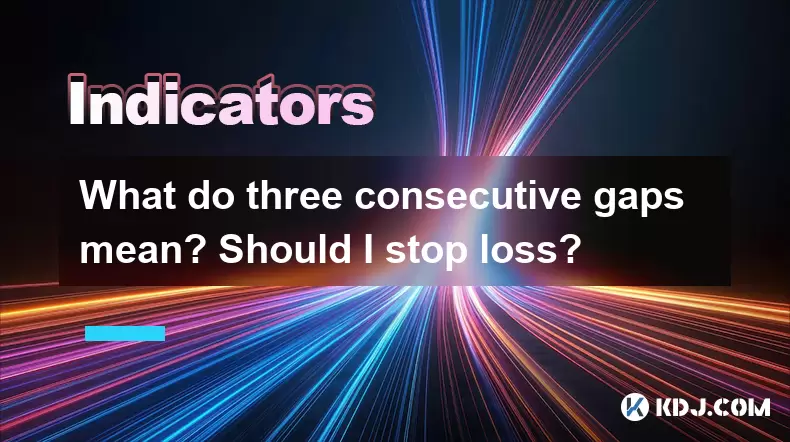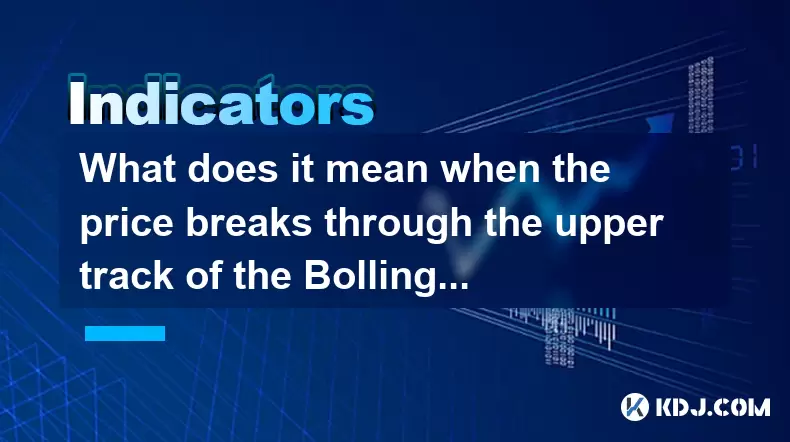-
 Bitcoin
Bitcoin $117500
-0.66% -
 Ethereum
Ethereum $3760
-1.24% -
 XRP
XRP $3.087
-2.54% -
 Tether USDt
Tether USDt $0.9999
-0.01% -
 BNB
BNB $803.6
-4.03% -
 Solana
Solana $180.3
-4.15% -
 USDC
USDC $0.9998
-0.01% -
 Dogecoin
Dogecoin $0.2218
-4.92% -
 TRON
TRON $0.3366
3.71% -
 Cardano
Cardano $0.7785
-3.73% -
 Hyperliquid
Hyperliquid $42.90
-4.75% -
 Sui
Sui $3.797
-7.45% -
 Stellar
Stellar $0.4165
-2.32% -
 Chainlink
Chainlink $17.65
-4.17% -
 Bitcoin Cash
Bitcoin Cash $561.0
-3.86% -
 Hedera
Hedera $0.2611
-4.54% -
 Avalanche
Avalanche $24.33
-7.02% -
 UNUS SED LEO
UNUS SED LEO $8.972
0.06% -
 Litecoin
Litecoin $107.6
-2.79% -
 Toncoin
Toncoin $3.254
-1.84% -
 Shiba Inu
Shiba Inu $0.00001306
-4.69% -
 Ethena USDe
Ethena USDe $1.001
0.00% -
 Uniswap
Uniswap $10.10
-4.83% -
 Polkadot
Polkadot $3.902
-4.63% -
 Monero
Monero $315.1
-2.57% -
 Dai
Dai $1.000
0.02% -
 Bitget Token
Bitget Token $4.499
-2.53% -
 Pepe
Pepe $0.00001145
-7.38% -
 Cronos
Cronos $0.1479
6.07% -
 Aave
Aave $281.3
-4.07%
What do three consecutive gaps mean? Should I stop loss?
Three consecutive gaps in crypto charts can signal strong momentum or a potential reversal, depending on their type and volume patterns.
Jun 19, 2025 at 02:22 am

Understanding the Concept of Gaps in Cryptocurrency Charts
In cryptocurrency trading, a gap refers to an area on a price chart where the price of an asset jumps sharply up or down without any trading occurring at certain price levels. This phenomenon usually happens during periods of high volatility or after significant news events that occur outside regular trading hours. In candlestick charting, gaps appear as empty spaces between consecutive candles. Gaps can be classified into different types, including common gaps, breakaway gaps, runaway (measuring) gaps, and exhaustion gaps.
When analyzing price charts, traders often look for multiple consecutive gaps to determine potential trends or reversals. The presence of three consecutive gaps can provide crucial insight into market sentiment and momentum. However, interpreting these gaps requires a thorough understanding of their context within broader market conditions and technical indicators.
The Significance of Three Consecutive Gaps in Crypto Trading
Three consecutive gaps may indicate strong momentum in the direction of the trend. If all three gaps are in the same direction—either upward or downward—it suggests that buying or selling pressure is intensifying. For example, three consecutive upward gaps could signal a powerful bullish trend fueled by positive news, increased adoption, or speculative demand. Conversely, three consecutive downward gaps might reflect heightened fear, panic selling, or regulatory concerns affecting investor confidence.
However, the interpretation isn't always straightforward. The type of gap matters significantly. A breakaway gap often signals the start of a new trend, while a runaway gap confirms the continuation of an existing trend. An exhaustion gap, on the other hand, typically marks the end of a trend before a reversal occurs. Traders must assess whether the third gap resembles a runaway or exhaustion type to make informed decisions.
It's also important to consider volume patterns alongside gaps. A surge in volume accompanying each gap reinforces the strength of the move. Declining volume with the third gap might suggest weakening momentum and an impending reversal.
How to Analyze Three Consecutive Gaps Using Technical Tools
To effectively analyze three consecutive gaps, traders should utilize a combination of candlestick patterns, support/resistance levels, moving averages, and volume analysis. Here’s how you can approach it step-by-step:
- Identify the Direction and Type of Gaps: Determine whether the gaps are bullish (upward) or bearish (downward). Use historical data to classify them as breakaway, runaway, or exhaustion.
- Overlay Moving Averages: Apply short-term and long-term moving averages such as the 20-day EMA and 50-day SMA. If prices continue to rise above rising EMAs, the trend remains strong.
- Check for Overbought or Oversold Conditions: Use oscillators like RSI or MACD to detect overextension. If RSI crosses above 70 during an uptrend with multiple gaps, it may signal a near-term pullback.
- Analyze Volume Patterns: Look for increasing or decreasing volume with each gap. Sustained high volume supports trend continuation; declining volume hints at weakness.
- Monitor Key Support/Resistance Levels: Observe whether the price respects or breaks critical levels after the third gap. A failure to hold support or resistance could indicate a reversal.
These tools help traders avoid false signals and increase the probability of accurate predictions when dealing with three consecutive gaps.
Should You Stop Loss When Facing Three Consecutive Gaps?
Deciding whether to place a stop loss after observing three consecutive gaps depends on several factors, including your risk tolerance, trading strategy, and the nature of the gaps. There is no one-size-fits-all answer, but here are key considerations:
- Trend Continuation Strategy: If the gaps align with a strong trend and are supported by volume and technical indicators, placing a stop loss too close might result in premature exits. Instead, trailing stop losses can protect profits while allowing room for the trend to continue.
- Reversal Signal Detection: If the third gap appears to be an exhaustion gap—accompanied by declining volume, bearish candlestick patterns, or overbought readings—it may be wise to tighten your stop loss or exit partially.
- Market Volatility: Cryptocurrencies are inherently volatile. During such phases, wider stop losses may be necessary to avoid being stopped out by normal price fluctuations.
- Position Size and Portfolio Allocation: Adjust stop loss placement based on how much capital you’ve allocated to the trade. Smaller positions can afford tighter stops, while larger ones may require more flexibility.
Ultimately, the decision to set or adjust a stop loss should stem from a well-defined trading plan rather than emotional reactions to market movements.
Common Misconceptions About Gaps in Crypto Markets
There are several misconceptions among novice traders regarding gaps in crypto markets:
- "All Gaps Will Be Filled": While some gaps do get filled eventually, especially common gaps, this isn’t guaranteed. Runaway and breakaway gaps often remain unfilled for extended periods.
- "Multiple Gaps Always Mean Reversals": This is not necessarily true. Multiple gaps can just as easily indicate a strong ongoing trend rather than an imminent reversal.
- "Gaps Only Occur Due to News Events": Although news can trigger gaps, they can also form due to algorithmic trading, large whale movements, or sudden liquidity changes.
Understanding these misconceptions helps traders avoid costly mistakes and develop more robust strategies when encountering three consecutive gaps.
Frequently Asked Questions
Q: Do gaps in cryptocurrency charts behave differently compared to traditional stock markets?
Yes, gaps in crypto markets tend to be more frequent and pronounced due to 24/7 trading, higher volatility, and less regulation. Unlike traditional markets that have fixed opening and closing times, crypto assets can gap significantly even overnight due to global trading activity.
Q: Can I trade based solely on gap patterns?
While gap patterns offer valuable insights, relying solely on them is risky. Combining gap analysis with other tools such as volume, moving averages, and candlestick formations increases accuracy and reduces false signals.
Q: How long does it take for a gap to be filled?
There is no fixed timeline for a gap to be filled. Some gaps are filled within days, while others may take months or remain unfilled indefinitely. Market conditions, trend strength, and overall sentiment play critical roles in determining this outcome.
Q: What time frames are best for identifying consecutive gaps?
Daily and 4-hour charts are commonly used for identifying meaningful gaps. Shorter time frames like 1-hour or 15-minute charts may show many small gaps, but they are often insignificant and prone to noise.
Disclaimer:info@kdj.com
The information provided is not trading advice. kdj.com does not assume any responsibility for any investments made based on the information provided in this article. Cryptocurrencies are highly volatile and it is highly recommended that you invest with caution after thorough research!
If you believe that the content used on this website infringes your copyright, please contact us immediately (info@kdj.com) and we will delete it promptly.
- Trump Coin (TRUMP): Technical Analysis and Cryptocurrency Speculation
- 2025-07-30 02:50:13
- Snorter Presale: How This Solana Bot Could Spark the Next Crypto Explosion
- 2025-07-30 03:30:13
- BlockDAG, X1 App, and PEPE Rebound: The Crypto Trio Turning Heads
- 2025-07-30 01:30:13
- Solana Price Analysis & 2025 Prediction: Can SOL Outpace the Underdog?
- 2025-07-30 01:30:13
- FaZe Banks, MLG Coin, and Resignation: What the Heck Happened?
- 2025-07-30 00:50:13
- Americans, Grocery Costs, and the Great Coin Phase Out: Are You Ready?
- 2025-07-30 00:50:13
Related knowledge

What does it mean when the EMA combination crosses upward for the first time after sideways trading?
Jul 28,2025 at 03:43pm
Understanding the EMA and Its Role in Technical AnalysisThe Exponential Moving Average (EMA) is a widely used technical indicator in cryptocurrency tr...

What does it mean when the price breaks through the upper track of the Bollinger Band but the RSI is overbought?
Jul 30,2025 at 03:35am
Understanding Bollinger Bands and Their Upper TrackBollinger Bands are a widely used technical analysis tool developed by John Bollinger. They consist...

What signal does the ROC send when it rises rapidly from a low level and breaks through the zero axis?
Jul 27,2025 at 10:15am
Understanding the Rate of Change (ROC) IndicatorThe Rate of Change (ROC) is a momentum-based oscillator used in technical analysis to measure the perc...

What does it mean when the moving averages are glued together and a gap appears?
Jul 29,2025 at 07:49pm
Understanding Moving Averages in Cryptocurrency TradingMoving averages are among the most widely used technical indicators in the cryptocurrency tradi...

What does it mean when TEMA breaks through the long-term downward trend line?
Jul 29,2025 at 02:50pm
Understanding the Role of Smart Contracts in Decentralized Finance (DeFi)Smart contracts are self-executing agreements with the terms of the agreement...

What does it mean when the price breaks through the double bottom neckline and the moving averages are arranged in a bullish pattern?
Jul 28,2025 at 10:57am
Understanding the Double Bottom PatternThe double bottom is a widely recognized reversal chart pattern in technical analysis, particularly within the ...

What does it mean when the EMA combination crosses upward for the first time after sideways trading?
Jul 28,2025 at 03:43pm
Understanding the EMA and Its Role in Technical AnalysisThe Exponential Moving Average (EMA) is a widely used technical indicator in cryptocurrency tr...

What does it mean when the price breaks through the upper track of the Bollinger Band but the RSI is overbought?
Jul 30,2025 at 03:35am
Understanding Bollinger Bands and Their Upper TrackBollinger Bands are a widely used technical analysis tool developed by John Bollinger. They consist...

What signal does the ROC send when it rises rapidly from a low level and breaks through the zero axis?
Jul 27,2025 at 10:15am
Understanding the Rate of Change (ROC) IndicatorThe Rate of Change (ROC) is a momentum-based oscillator used in technical analysis to measure the perc...

What does it mean when the moving averages are glued together and a gap appears?
Jul 29,2025 at 07:49pm
Understanding Moving Averages in Cryptocurrency TradingMoving averages are among the most widely used technical indicators in the cryptocurrency tradi...

What does it mean when TEMA breaks through the long-term downward trend line?
Jul 29,2025 at 02:50pm
Understanding the Role of Smart Contracts in Decentralized Finance (DeFi)Smart contracts are self-executing agreements with the terms of the agreement...

What does it mean when the price breaks through the double bottom neckline and the moving averages are arranged in a bullish pattern?
Jul 28,2025 at 10:57am
Understanding the Double Bottom PatternThe double bottom is a widely recognized reversal chart pattern in technical analysis, particularly within the ...
See all articles

























































































